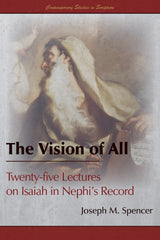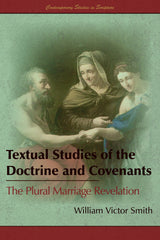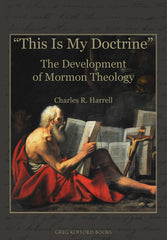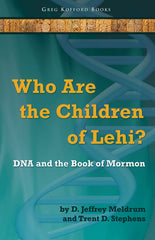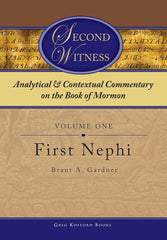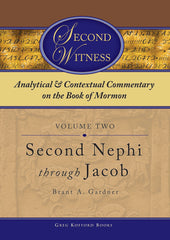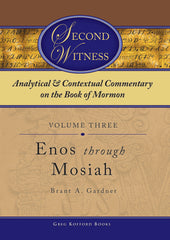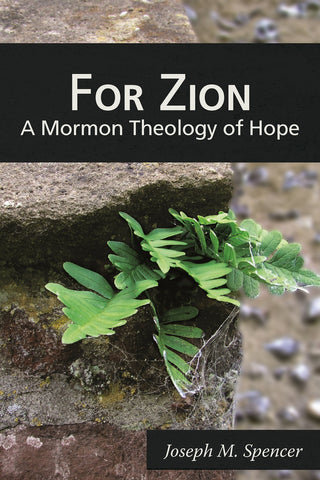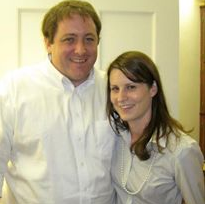News
Christmas Gift Sale: 30% off select titles! November 29 2019

Christmas Gift Sale: 30% off select titles*
Looking for the perfect gifts for the book lover in your life? Get 30% off select titles now through Dec 18.
**Free pickup is available for local customers. See below for details.**
Sale ends Wednesday, 12/18/2019
|
$20.95 |
$21.95 |
$27.95 |
|
|
$26.95 |
$21.95 |
$19.95 |
|
|
$20.95 |
$27.95 |
$25.95 |
|
|
$26.95 |
$34.95 |
$34.95 |
|
|
$20.95 |
$19.95 |
||
|
$34.95 |
$36.95 |
$29.95 |
|
|
$34.95 |
$15.95 |
||
|
$39.95 |
$39.95 |
$39.95 |
|
|
$49.95 |
$39.95 |
$39.95 |
|
|
|
COMPLETE SET $249.70 |
FREE PICKUP FOR LOCAL CUSTOMERS
Enter PICKUP into the discount code box at checkout to avoid shipping and pick up the order from our office in Sandy, Utah.
Pickup times available by appointment only. Email order@koffordbooks.com to schedule your pickup time.
*Offers valid for U.S. domestic customers only. Limited to available supply.
Q&A with David B. Ostler for Bridges: Ministering to Those Who Question July 23 2019

| Download a free sample preview | Order your copy |
Q: Give us a brief background into who you are and why you decided to write this book.
A: I’m a retired father and husband, with six children and five, almost six, grandchildren. My children are wonderful and some no longer believe in basic principles and doctrines of the Church. I’ve been a leader in the Church and with my wife, served two full time and two church service missions. Our last mission was in our stake, working with leaders to better understand why people disaffiliate from the Church.
As we worked with our stake leaders, we research and studied the frequency and causes why people, particularly previously faithful adults, choose to disaffiliate. We found that Church-wide most leaders see disaffiliation as a very important concern in their ward, stake and particularly in their family. We also found that many leaders were not fully aware of the underlying reasons and didn’t feel they fully understood how to help. They probably feel the same in their homes.
So, after completing that calling, I decided that I could take what we learned and create a resource for members to better understand why people leave so that we could find common ground, build understanding and truly minister to those who no longer worship with us. I conducted some original research, interviewed leaders and disaffiliated members, and studied the words of our Church leaders as well as experts in the field. In this research, I learned that the pain of disaffiliation isn’t just felt by that person’s family or leaders, but also by the disaffiliating member. They often feel isolation, fear, anger and other hurtful emotions; often unintentionally caused by their family, friends, and leaders.
I hope this book can bridge that misunderstanding and give us a better understanding to build trusting and meaningful relationships with those who no longer believe as we do.
Q: Who is your intended audience for the book and how do you hope it will be used?
A: I think there will be two readers for the book. I wrote the book for fully believing members so that they can better understand their friends, ward member, or family member who no longer believes in the truth claims of the Church of Jesus Christ of Latter-day Saints. I hope it gives each reader understanding on how to build a trusted relationship with that person. With that understanding, I hope that some of the pain, fear, and hurt that is felt on both sides can be turned into love and acceptance. Perhaps in some cases, that understanding will create an opportunity for someone to “come back” or to have someone “stay.” For believing members, I hope that reading this book will help build a bridge with a better understanding as they minister to those who doubt.
I also realize readers will include some who no longer believe. I hope that this book will give them hope that we are trying to be more understanding and that their relationship with their families, friends and Church members can be strong and rich, even with differences in belief.
This isn’t a leadership book. But knowing that each leader is also a member and that we rotate in and out of ward and stake callings, I include some ideas that leaders can use with their callings. The principles are the same and can be applied in families, with friends, as church members, and when we serve in church callings.
Q: We hear numerous reports of religious disaffiliation in our modern age, particularly in Western society. How are these trends reflected in The Church of Jesus Christ of Latter-day Saints?
A: All churches and denominations are experiencing a drop in membership and participation. Younger Americans, particularly Millennials and Gen-Z, see little need to participate in organized religion. In fact, the fastest-growing group of religious identification is “spiritual, but non-religious.” As Latter-day Saints, we are experiencing these same trends. The underlying reasons include society’s broad acceptance of those who are non-religious, people being comfortable going it alone, less trust of institutions in general and of religions specifically, more opportunities to find friends and like-minded people through social media and other settings, and more. The reasons are many.
For the Church in the United States, data from social scientists show that disaffiliation for those born after 1970 is about 39% and, although the sample size is low, that 55% of millennials have disaffiliated. Most of those who disaffiliate remain on the rolls of the Church, but no longer think of themselves of Latter-day Saints. And they disaffiliate younger than previous generations. The average age of millennial disaffiliation is 18.4 years while for boomers it was 23.7 years.
Q: What are a few root causes for religious disaffiliation among Latter-day Saints?
A: Latter-day Saints experience all the same issues as other religions, but there are unique issues which we face. Some leave because they become aware of issues in our history which are controversial or seem inconsistent with our values. They may have concerns about particular Church policies, like our teachings about LGBTQ issues. They may disagree with the way in which women and men serve and experience the Church. Church culture and what they experience in their wards and classes may feel judgmental and perfectionistic. They may be different in some way, like being childless, or being single, experiencing mental illness, being politically liberal. Others just don’t feel the Church addresses the areas which are meaningful to them, including issues of social justice, poverty, racism, sexism or violence.
Q: What are a few typical responses among families and congregations towards those who disaffiliate or become disaffected with the Church’s teachings?
A: As I interviewed members and read their comments and experiences in my surveys, I was frankly surprised by the disconnect between fully believing members and local leaders and those who doubt, question, or have left the Church. Many believing members feel the primary reasons why people leave is because they are offended, have sinned, or are lazy. They sometimes blame the disaffiliating member for having not studied scriptures, prayed, or attended the temple often enough. Those members who are struggling with their faith often have serious doctrinal, historical, or cultural concerns about the Church. When members or local leaders don’t have a true understanding of why these people leave or struggle to stay, their efforts are often ineffective, or worse, hurtful, and push members further away.
Sometimes it is because they don’t understand, but also, it causes fear when a family member learns their child, sibling, or spouse is struggling with belief. It threatens their hope for an eternal family as they worry about their spiritual welfare.
Without thinking about it, we make a snap judgment as to why they have left and assume that it is because they have been offended or because of secret sin. We may be afraid to ask them because we don’t want to offend them. We might keep them at arm’s length and be afraid that they will infect us with doubt. Some disaffiliated members feel that they are labeled as “anti-Mormon” or “apostates” and don’t feel that they are welcome. We may exclude them from our social life because we are uncomfortable with them or with having our children associate with them. Leaders may release them from their callings even though they are willing to serve.
Sometimes in our interactions with disaffiliated members, we seek to testify or explain away their concerns when they just want to keep their close relationship, friendship, or continue to worship even with their doubts.
Q: What are a few ways we can minister to disaffiliated and disaffected members, both individually and as congregations?
First and most important, we need to learn to listen to them individually and collectively. We really don’t know their concerns unless we take the time to listen. Listening is hard—it means that we suspend trying to explain their decision and instead really let them share with us what they are feeling and why. Our minds will naturally try and explain it away and find the fault in their logic or life that lead them to their new beliefs. As they are talking, our minds might be filled with how we can counter their concerns. We might be tempted to encourage them to read more scripture, pray harder, or go to the temple. But first, we need to just listen to understand their concern and why it is important to them. Giving unsolicited advice rarely works.
While listening, we need to take their concerns seriously. These issues are very real to them and we should never try and minimize their concerns. We need to validate, even if we disagree. Later, after they know that we really care about their concerns and how it impacts them, perhaps we can discuss ways to think about the issue or even more forward without a clear resolution.
Q: What brief message can you offer to family members or friends of individuals who have become disaffected with the Church’s teachings or who have chosen to disaffiliate?
A: As we listen and validate, we can answer some questions; and when we can’t, we can mourn and comfort our family or friend who has become disaffected. We can find common ground, even if we aren’t 100% united in the values we live and in our spiritual beliefs. Our relationships can be meaningful, close, and full of love, even with these differences.
If they come back, that’s wonderful. If they don’t, we can trust the Lord and enjoy every moment, even within our differences. I take great comfort from Elder Orson F. Whitney, who said, “Our Heavenly Father is far more merciful, infinitely more charitable than even the best of his servants, and the everlasting gospel is mightier in power to save than our narrow finite minds can comprehend.” Our Heavenly Parents love our family member or friend far more than we can comprehend. They want their happiness too, today and forever.
David B. Ostler
July 2019
Free ebook offer: The End of the World, Plan B: A Guide for the Future November 08 2018
FREE EBOOK FOR NEWSLETTER SUBSCRIBERS
Book description:
Environmental decline, political gridlock, war and rumors of war, decadence, and immorality. The End of the World, Plan B traces the idea of the end, or destruction, of the world through a number of spiritual traditions. It shows that our present understanding of the “end game” has been distorted by a modern emphasis and demand on justice as the ultimate good. As an alternative to this self-destructive approach, Charles Shirō Inouye shows that in these traditions, justice is not the isolated end in itself that we ought strive for; rather it is taught in tandem with its balancing companion: compassion. Plan B is a hopeful alternative to our fears about how things are going.
“Inouye reminds us that justice is not enough and that obedience is not the currency of salvation. He urges us to recognize the limits of the law, to see that, severed from a willingness to compassionately suffer with the world’s imperfection and evanescence, our righteous hunger for balancing life's books will destroy us all.” — Adam S. Miller
DID YOU KNOW? Amazon pays authors and publishers roughly half the royalty percentage on ebooks compared to other services such as Apple, Barnes & Noble, and Kobo. Please consider increasing your support for independent authors and independent publishing by switching from Kindle to Apple Books (iBooks), Nook, or Kobo. Thank you!
STEPS TO DOWNLOAD
**Ebook file must be downloaded onto a laptop or desktop computer. After downloading, you can transfer the file to your ebook reader, tablet, or smartphone app.**
1. Enter your email address in the form below to sign up for our newsletter and receive a welcome email with instructions (check your junk mail if you do not see it). If you are already a newsletter subscriber, you should have received an email with this free ebook offer and instructions to download.
2. Click the here to open the ebook page on our website. Select which ebook format you wish to download (Kindle, Apple, Nook/Kobo). The price will show as $13.95 but will change to $0.00 as you complete these steps.
3. Click Add to Cart.
4. Click Checkout.
5. On the Customer Information page, fill out your name and address information. Enter the discount code that you received. The discount code will reduce the price of the book to $0.00.
6. Click Continue to Payment Method. You will not be required to enter payment info. DO NOT ENTER ANY CREDIT CARD INFORMATION.
7. Click Complete Order. You will be emailed a link to download the ebook along with instructions for transferring the ebook file to an e-reader device or tablet/smartphone app (check your junk mail if you do not see it).
Note: Once you have downloaded your ebook, it will be on your computer's hard drive, most likely in the "Downloads" folder. Kindle format will end with ".mobi." All other formats will end with ".epub."
Q&A with Laura Rutter Strickling for On Fire in Baltimore: Black Mormon Women and Conversion in a Raging City September 11 2018

Q: Will you give us a little background into your formal education and how it relates to this book.
A: I received an undergraduate degree from Brigham Young University way back in 1977, then, twenty years later, completed post-baccalaureate work in Spanish at Augusta State University. In between this time, our family of six lived in southern Spain for seven years where the kids attended Spanish schools in Rota, across the Bay of Cádiz. Later, back in the States, I taught high school Spanish in North Carolina until our four kids left home, then went on to do graduate work. I received an M.A. from the University of Maryland Baltimore County in Intercultural Communication, and a Ph.D. in Sociocultural Linguistics. My doctoral research focused on the impact of educator's attitudes toward students who speak African American English, and I developed a model that explains the process of reframing a linguistic mindset. This model shows that standard language ideology (in this case, the belief that Black English is poor English, instead of a language variation) is not easily modified, but requires incremental training, and the implementation of linguistically aware practices followed by analysis. I also completed a two-year post-doctoral position in Urban Education in Baltimore where we evaluated the efficacy of Turnaround interventions in low performing schools. In terms of writing On Fire in Baltimore, my academic preparation provided me with an interdisciplinary theoretical foundation regarding language, race relations, and intercultural difference; and living in the city provided me with day to day experience in an interracial neighborhood.
Q: How did this study come together and what were your goals with it?
A: Well, come together is probably a good description because it implies a process. Qualitative research can be fluid and take on twists and turns as the research unfolds. I began a study focused on recording the life and conversion of the African American women in my congregation—an endeavor that spanned over ten years and resulted in twenty-five recorded interviews and four hundred pages of transcription. But the interviews were more than data collection; they opened the door to sisterhood and sojourn into the Black community. Sitting side by side in their living room or at the kitchen table, these women would draw me into their narrative with Black vernacular, laughter, and tears. More than once I would find myself holding their hand as their eyes welled up from painful memories or smiling at their sarcasm as they described a family member. And my association did not end with the interviews; the women would invite me to family celebrations and birthdays or ask for rides across town to pick up prescriptions. They would call me out of the blue because they “had a feeling,” then tell me another story about their lives. These church sisters also let me know that they were interested in my work. “How are the stories coming?” some would ask as they passed me in the church halls. “We are praying for you,” they would tell me as the unfinished book advanced from months to years.
But our time together was not always easy; sometimes there were tense moments that were difficult to navigate. Sometimes I would find myself in a racialized snare that I could not resolve by intuition. A feminist theoretical approach obligated me to be mindful of these emotions and enabled me to adopt a reflective process aimed at exposing my biases and questioning my responses. It provided me with the theoretical underpinning to acknowledge that, as a researcher, I would naturally affect the research I do, but also, in the process, I would be affected by it. Keeping this in mind, I documented the evolution of my thoughts as I interacted with these Black women and as I attempted to peel back the layers of my racialized assumptions.
Q: You mentioned that what began as a linguistic study quickly turned into racially-entangled conversion narratives. Can you explain that a little further?
A: What I’m saying is that intersectionality became clearer to me. By intersectionality, I mean that socially constructed categories such as, race, class, and gender-hierarchy interrelate and come together to impact the degree of marginalization or healthy acceptance into a society. You cannot separate these Black women’s marginalized lives from their conversion stories. For example, Delilah talks about “the worst time in her life” when her husband pushed her to the floor, then held a gun to her head. After that, he beat her up, so she left him. Alone and without food for her children or electricity for the house, she went to her Baptist Church seeking help. Instead of help, she ended up losing twenty dollars. In anger and without resources, she yells at God, telling him that she would not go to church anymore—God would have to send a church to her. A few days later, she says “two White boys came knocking at my door, and I wondered, what are these White boys doing in this Black neighborhood?” Delilah says that her life changed after baptism into the Church of Jesus Christ.
But once Black women join the Latter-day Saints, they also have to reconcile that the Church denied them full access to full membership before 1978. Their membership was yet another layer of marginalization. The women in On Fire in Baltimore each have their own way of explaining the reason for this lack of access. Delilah, for example, researched the story of Black Mormon pioneer, Jane Manning James, and found comfort in Jane’s fortitude.
Q: Can you provide one or two specific examples from the book of stories that stood out to you in particular?
A: Every one of these Black sisters’ stories impacted me, but I can offer two examples. The first is found at the beginning of the book and was an experience that left me deeply reflective as to where I would take my work. In this excerpt, I am interviewing Ruth:
"I love doing these interviews," I explain, taking a stab at getting the interview started, "because I feel like the sisters are with me every day when I listen to their recorded voices and transcribe their words." Ruth smiles at me and nods her head, and I'm feeling confident in the work I'm doing. But my satisfaction is short lived, and I am quickly reminded of how fragile the interview process can be. With my next comment, I fall from academic grace onto uncertain interview ground. I tell Ruth that I have run across colleagues who were surprised to learn that there were African American Mormon women in Baltimore, and that they were interested in hearing their conversion stories. Without a hint of accusation and with her customary mild voice, Ruth asks, "Are you only interviewing African American women? Because I'm not African American. My father was White and my mother was Native American."
I catch my breath for one speechless moment as a wave of panic washes over me. I had assumed Ruth's racial identity. After years of theoretical study regarding the hegemonic construction and social complexities of identity, culture and race--how had I done that?
This experience sent me on a four-month journey researching race--in particular, the racialization of America and the formation of whiteness.
The second excerpt is found toward the end of the book and shows the reader how this work is more than a series of interviews or a collection of conversion stories. It illustrates how my life became intertwined with the Black sisters in my congregation. At the time of this story, I was the choir director and Clara was a member of the choir:
“[A]s I went to sit down Clara appeared out of nowhere. ‘Could we meet together for ten minutes some time?’
Thinking that this must be a question about the choir, I answered, ‘How about now?’ and followed her out the chapel door into the hall. But when she kept on walking, I realized that she must have wanted to meet more privately. Clara led me into a classroom and closed the door.
‘Can we have a prayer?’ She was asking me. In the split second that I automatically said yes, I was also wondering which one of us would be praying and for what purpose. But I was not left to ponder long because Clara immediately grabbed my hands, facing me. She pulled me close and started praying out loud in a strong voice. But she had crossed her arms in front of her chest so that she was holding onto my hands, right to right and left to left. I did not hear what Clara was saying at first, because I was trying to figure out the meaning of this hand position.
She was praying for me. ‘Heavenly Father, thank you for Sister Strickling. She was inspired to come today. Help heal her with the treatment she is going through. Thank her Heavenly Father. Heal her. Heal her Heavenly Father.’”
Q: In what ways did this study challenge your view of whiteness, and how race impacts your own perspective?
A: Generally, we do not become “raced” until we experience a racialized encounter. In other words, because race is a social construct, we are not aware of our whiteness, blackness, or browness, until someone’s behavior points it out. Several of the Black women in this book told me that they did not realize they were Black until they got their first paycheck and went shopping only to be told that Black people could not try on clothes in that store. Growing up in rural Oregon, I did not have many racialized experiences, and living in Spain, I viewed my day to day encounters with Spaniards in terms of cultural or linguistic difference. Baltimore was a good place for me to learn about racialized behaviors.
A: What are you hoping that readers will gain from this book?
That the last shall be first and the first shall be last. In other words, I'm hoping that these stories will inspire readers of all races to question their assumptions. Lorraine Hansberry, author, and the first Black playwright to write a play that was performed on Broadway, said: [Do you want to know about] love . . . and life? Ask those who have tasted of it in pieces rationed out by enemies . . . Ask . . . those who have loved when all reason pointed to the uselessness and fool-hardiness of love. Out of the depths of pain we have thought to be our sole heritage in this world—oh, we know about love! Perhaps we shall be the teachers when it is done.[1]
Today, social discourse on race and racism persists, in the news, on talk radio and social media, but how do we go about being the teachers and the students that Hansberry described? What quality of relationship would foster this reciprocity? This book is really the beginning of that discussion.
__________
[1] Lorraine Hansberry, To Be Young, Gifted and Black: A Portrait of Lorraine Hansberry in Her Own Words, 104. Hansberry (1930–1965) playwright and author, wrote A Raisin in the Sun (1959) and was the first Black playwright to write a play that was performed on Broadway.
Preview a sample of On Fire in Baltimore
Upcoming speaking and signing events:
Tue Oct 23 at 6:30pm | Weller Book Works (SLC) | RSVP
Thu Oct 25 at 7:00 pm | Writ & Vision (Provo) | RSVP
Fri Oct 26 at 6:30 pm | Thunderbird Books (Ephraim) | RSVP
Q&A Part 2 with the Editors of The Expanded Canon: Perspectives on Mormonism & Sacred Texts September 11 2018

Hardcover $35.95 (ISBN 978-1-58958-637-6)
Part 2: Q&A with Brian D. Birch (Part 1)
Q: When and how did the Mormon Studies program at UVU launch?
A: The UVU Mormon Studies Program began in 2000 with the arrival of Eugene England. Gene received a grant from the National Endowment for the Humanities to explore how Mormon Studies could succeed at a state university. A year-long seminar resulted that included a stellar lineup of consultants and guest scholars. From that point forward, the Religious Studies Program has developed multiple courses complemented by our annual Mormon Studies Conference and Eugene England Lecture—to honor Gene’s tragic and untimely passing in 2001. The program also hosts and facilitates events for independent organizations and publications including the Society for Mormon Philosophy and Theology, the Dialogue Foundation, the Interpreter Foundation, Mormon Scholars in the Humanities, Association for Mormon Letters, and others.
Q: How is the UVU Mormon Studies program distinguished from Mormon Studies programs that have emerged at other campuses?
A: Mormon Studies at UVU is distinguished by the explicitly comparative focus of our work. Given the strengths of our faculty, we have emphasized courses and programming that addresses engagement and dialogue across cultures, faith traditions, and theological perspectives. Permanent course offerings include Mormon Cultural Studies, Mormon Theology and the Christian Tradition, Mormon Anthropology, and Mormon Literature. Our strengths lie in areas other than Mormon history, which is well represented at other institutions—and appropriately so. Given the nature of our institution, our events are focused first and foremost on student learning, but all our events are free and open to the public and we welcome conversation between scholars and nonprofessionals.
Q: How long has the annual UVU Mormon Studies Conference been held, and what have been some of the topics of past conferences?
A: As mentioned above, the Mormon Studies Conference was first convened by Eugene England in 2000, and to date we have convened a total of nineteen conferences. Topics have ranged across a variety of issues including “Islam and Mormonism,” “Mormonism in the Public Mind,” “Mormonism and the Art of Boundary Maintenance,” “Mormonism and the Internet,” etc. We have been fortunate to host superb scholars and to bring them into conversation with each other and the broader public.
Q: Where did the material for the first volume, The Expanded Canon, come from?
A: The material in The Expanded Canon emerged came from our 2013 Mormon Studies Conference that shares the title of the volume. We drew from the work of conference presenters and added select essays to round out the collection. The volume is expressive of our broader approach to bring diverse scholars into conversation and to show a variety of perspectives and methodologies.
Q: What are a few key points about this volume that would be of interest to readers?
A: Few things are more central to Mormon thought than the way the tradition approaches scripture. And many of their most closely held beliefs fly in the face of general Christianity’s conception of scriptural texts. An open or expanded canon of scripture is one example. Grant Underwood explores Joseph Smith’s revelatory capacities and illustrates that Smith consistently edited his revelations and felt that his revisions were done under the same Spirit by which the initial revelation was received. Hence, the revisions may be situated in the canon with the same gravitas that the original text enjoyed. Claudia Bushman directly addresses the lack of female voices in Mormon scripture. She recommends several key documents crafted by women in the spirit of revelation. Ultimately, she suggests several candidates for inclusion. As the Mormon canon expands it should include female voices. From a non-Mormon perspective, Ann Taves does not embrace a historical explanation of the Book of Mormon or the gold plates. However, she does not deny Joseph Smith as a religious genius and compelling creator of a dynamic mythos. In her chapter she uses Mormon scripture to suggest a way that the golden plates exist, are not historical, but still maintain divine connectivity. David Holland examines the boundaries and intricacies of the Mormon canon. Historically, what are the patterns and intricacies of the expanding canon and what is the inherent logic behind the related processes? Additionally, authors treat the status of the Pearl of Great Price, the historical milieu of the publication of the Book of Mormon, and the place of The Family: A Proclamation to the World. These are just a few of the important issues addressed in this volume.
Q: What is your thought process behind curating these volumes in terms of representation from both LDS and non-LDS scholars, gender, race, academic disciplines, etc?
A: Mormon Studies programing at UVU has always been centered on strong scholarship while also extending our reach to marginalized voices. To date, we have invited guests that span a broad spectrum of Mormon thought and practice. From Orthodox Judaism to Secular Humanists; from LGBTQ to opponents to same-sex marriage; from Feminists to staunch advocates of male hierarchies, all have had a voice in the UVU Mormon Studies Program. Each course, conference, and publication treating these dynamic dialogues in Mormonism are conducted in civility and the scholarly anchors of the academy. Given our disciplinary grounding, our work has expanded the conversation and opened a wide variety of ongoing cooperation between schools of thought that intersect with Mormon thought.
Q: What can readers expect to see coming from the UVU Comparative Mormon Studies series?
A: Our 2019 conference will be centered on the experience of women in and around the Mormon traditions. We have witnessed tremendous scholarship of late in this area and are anxious to assemble key authors and advocates. Other areas we plan to explore include comparative studies in Mormonism and Asian religions, theological approaches to religious diversity, and questions of Mormon identity.
Download a free sample of The Expanded Canon
Listen to an interview with the editors
Upcoming events for The Expanded Canon:
Tue Sep 18 at 7pm | Writ & Vision (Provo) | RSVP on Facebook
Wed Sep 19 at 5:30 pm | Benchmark Books (SLC) | RSVP on Facebook
Free ebook offer: Dead Wood and Rushing Water: Essays on Mormon Faith, Culture, and Family June 05 2018
FREE EBOOK FOR NEWSLETTER SUBSCRIBERS
Book description:
For over a decade, Boyd Petersen has been an active voice in Mormon studies and thought. In essays that steer a course between apologetics and criticism, striving for the balance of what Eugene England once called the “radical middle,” he explores various aspects of Mormon life and culture—from the Dream Mine near Salem, Utah, to the challenges that Latter-day Saints of the millennial generation face today.
"Petersen should be considered among the preeminent essayists of this moment in Mormon history.” — Mark Brown, BYU Studies Quarterly
STEPS TO DOWNLOAD
**Ebook file must be downloaded onto a laptop or desktop computer. After download, the file can be transferred to your ebook reader, tablet, or smartphone app. If you are already a newsletter subscriber, you should have received an email with this free ebook offer and instructions to download.**
1. Enter your email address in the form below to sign up for our newsletter and receive a welcome email with instructions. If you do not see this email, check your spam, junk mail, or promotions folder.
2. Click the link in the welcome email to go to the book page on our website. Select which ebook format you wish to download (Kindle, Nook/Kobo, Apple). The price will show as $9.99, but will be changed to $0.00 as you complete these steps.
3. Click Add to Cart.
4. Click Checkout.
5. On the Customer Information page, fill out your name and address information. Enter the discount code that you received in your welcome email. The discount code will reduce the price of the book to $0.00.
6. Click Continue to Payment Method. You will not be required to enter payment info.
7. Click Complete Order. You will be emailed a link to download the ebook along with instructions for transfering the ebook file to an ereader device or tablet/smartphone app (check your spam, junk email, or promotions folder in your email inbox if you do not see it).
Note: Once you have downloaded your ebook, it will be on your computer's hard drive, most likely in the "Downloads" folder. For example, if you downloaded the ebook in Kindle format, the file name will be "Dead Wood and Rushing Water_AMAZON.mobi."
5 Things We Learned About the Jesus of Nazareth January 22 2018
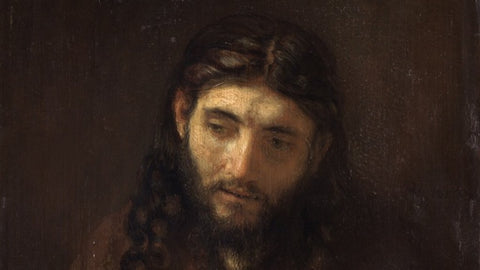
Consider the many different ways Jesus has been portrayed over the centuries or the ways his name has been employed in support of this or that cause. N. T. Wright, a prominent Jesus scholar and Anglican Bishop, observes that he is “almost universally approved of” but for “very different and indeed often incompatible reasons.” If this is the case, then we wondered what Jesus were we worshiping and whether that Jesus was one of our own making?
During the past half-century historians have made significant strides examining the most recently discovered source materials in order to think once again about existing documents like the four Gospels. The aim was to reconstruct the Jesus who the men and women in first-century Palestine would recognize and follow. Jesus was born into an ancient society constrained by millennia of social, theological, and political practices perpetuated by the minority ruling elite and facilitated by a vast majority of souls who knew of no other way. Periodically prophets would rail against the system in the name of God. But the great, colossus of ancient Rome remained sustained through the oppression of individuals, the very individuals that Jesus came to invite into a new, righteous Kingdom.
The Jesus of history and the Gospels largely displaced the conventions of his day with regard to women and the family, as well as the social standing of the poor, the wealthy, and the outcast.
On Women:
In the twenty-first century, when issues regarding the roles of men and women in religious environments are alive and controversial, Jesus’s treatment of women was prescient. His example and the privileges afforded the first female Christians provide important perspectives. The subject takes on added significance as we appreciate the meaning of the priestly roles that women play in Latter-day Saint temples. Echoing what N. T. Wright suggests in his recent book Surprised by Scripture, we must “think carefully about where our own cultures, prejudices, and angers are taking us, and make sure we conform not to the stereotypes the world offers but to the healing, liberating, humanizing message of the gospel.” He continues, “[we live in a time when] we need to radically change our traditional pictures of what men and women are and of how they relate to one another within the church, and indeed of what the Bible says on this subject.”
On the Family:
What little Jesus had to say about the family is jarring to modern ears. He replaced the household of his day with a new universal family called the Kingdom of God where all were brothers and sisters. All were welcome: the poor and the rich, men and women, bond and free, high and low, Jew and Gentile. Members were asked to live in a communal order where everyone had what they needed.
On the Poor:
At the end of Jesus’s ministry, his priorities had not shifted from those he announced by way of the Isaiah text he read as he stood in the synagogue in Nazareth. Prior to his betrayal, Jesus spoke about the Final Judgment. He reminded those who heard him then, as well as those who hear him today, that when our lives are weighed in the balance, we will be judged not on what we know, or how many things we owned, or on how many church meetings we attended; rather, we will be judged on the basis of how well we loved our neighbors, and how well we fed the hungry, clothed the naked, cared for the sick, and visited those in need (Matt. 25:31–46).
On the Wealthy:
Matthew’s Gospel records that Jesus spoke to a “rich young man” who, by his own report, kept all the commandments in Torah, the Mishnah, and the Oral Traditions. Jesus asked him to go one step further and distribute all his wealth equally amongst the poor in order to be a part of God’s kingdom (Matt. 19:21-22). The apocryphal Gospel of Hebrews records that when the young man could not take that step, he “began to scratch his head because he did not like that command.” But then, Mark’s Gospel says, “Jesus felt genuine love for [this man]” (Mark 10:21 NLT).
Father James Martin, in a memoir on his pilgrimage to the Holy Land in 2014, writes about his encounter with the story, standing on the supposed spot where Jesus told it: “Jesus ‘loved him’? Where did that come from? I had heard this Gospel story dozens of times. How had I missed that line? . . . Those three words . . . altered the familiar story and thus altered how I saw Jesus. No longer was it the exacting Jesus demanding perfection; it was the loving Jesus offering [agency]. Now I [and we] could hear him utter those words with infinite compassion for the man. . . . Jesus explicitly offers a promise of abundance to everyone” (Jesus: a Pilgrimage, 271).
Jesus invited all to be bound to him by the “covenant of salt.”
The Covenant of Salt is a three-part obligation. The meaning of the name of the covenant would have been obvious to the men and women who followed him: salt was and is the root word of salvation and it was an enormously valuable commodity in their day. At the end of our study, we came to understand a little better what N. T. Wright observes – that what mattered most to Jesus was that his true disciples were “the kind of people through whom the kingdom will be launched on earth.” Being like Jesus meant that each of us qualified for heaven through serving his “lambs.” Being like Jesus was about loving others and thereby transforming the earth, making it a Godlike place. It was what Jesus earnestly prayed for and by example asked us to pray for: “Thy kingdom come. Thy will be done in earth, as it is in heaven” (Matt. 6:10 KJV; emphasis added). God’s ultimate rule on earth will come about because we, as true disciples of Jesus Christ, are the light of the world and the salt of the earth (Matt.5:13, 14 KJV). We have covenanted. We have come away from this pilgrimage with a resolve to “have salt in ourselves, and have peace one with another” (Mark 9:50 KJV).
James and Judith McConkie will be speaking and signing books at Writ & Vision in Provo, Utah, on Tuesday, January 30 at 7 pm, and at Benchmark Books in Salt Lake City on Wednesday, February 7 at 5:30 pm..These events are free to the public.
 James W. McConkie has JD from the S. J. Quinney College of Law at the University of Utah. His practice has focused in the area of torts and civil rights for more than four decades. He has been an adjunct professor at Westminster College teaching Constitutional law for non-lawyers. He has taught Church History and New Testament courses for BYU’s Division of Continuing Education for over 15 years with his wife Judith and is the author of Looking at the Doctrine and Covenants for the Very First Time. In 2017 he and his law partner Bradley Parker created the Refugee Justice League, a non-profit organization of attorneys and other professionals offering pro-bono help to refugees who have been discriminated against on the basis of their religion, ethnicity, or national origin.
James W. McConkie has JD from the S. J. Quinney College of Law at the University of Utah. His practice has focused in the area of torts and civil rights for more than four decades. He has been an adjunct professor at Westminster College teaching Constitutional law for non-lawyers. He has taught Church History and New Testament courses for BYU’s Division of Continuing Education for over 15 years with his wife Judith and is the author of Looking at the Doctrine and Covenants for the Very First Time. In 2017 he and his law partner Bradley Parker created the Refugee Justice League, a non-profit organization of attorneys and other professionals offering pro-bono help to refugees who have been discriminated against on the basis of their religion, ethnicity, or national origin.
 Judith E. McConkie has an MFA in printmaking from BYU and a PhD in philosophy of art history and museum theory from the University of Utah. She has taught art history at the secondary and then university levels for over 40 years. She was the Senior Educator at BYU’s Museum of Art and Curator of the Utah State Capital during its major renovation project from 2004–2010. During that time she authored With Anxious Care: the Restoration of the Utah Capital. She continues to teach in BYU’s Division of Continuing Education with her husband James. She has published in Sunstone and Dialogue: A Journal of Mormon Though and has presented at Sunstone’s annual symposium. Her prints and watercolors have been exhibited nationally and in the Henry Moore Gallery in London, England. She and James are the parents of three children and 12 grandchildren.
Judith E. McConkie has an MFA in printmaking from BYU and a PhD in philosophy of art history and museum theory from the University of Utah. She has taught art history at the secondary and then university levels for over 40 years. She was the Senior Educator at BYU’s Museum of Art and Curator of the Utah State Capital during its major renovation project from 2004–2010. During that time she authored With Anxious Care: the Restoration of the Utah Capital. She continues to teach in BYU’s Division of Continuing Education with her husband James. She has published in Sunstone and Dialogue: A Journal of Mormon Though and has presented at Sunstone’s annual symposium. Her prints and watercolors have been exhibited nationally and in the Henry Moore Gallery in London, England. She and James are the parents of three children and 12 grandchildren.
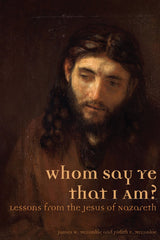 |
Whom Say Ye that I Am? Lessons from the Jesus of Nazareth Available Jan 30, 2018 |
Ebook Flash Sale on Mormon titles starts December 12th! December 11 2017

Greg Kofford Books is pleased to announce our second annual EBOOK FLASH SALE on select titles on Tuesday, December 12th and Wednesday, December 13th! Pick up a few titles that have been on your reading list for as low as $2.99!
Click image below to purchase. Offer is valid for Kindle ebooks only.
 |
Future Mormon: Essays in Mormon Theology |
 |
Rube Goldberg Machines: Essays in Mormon Theology |
 |
The Mormoness; or The Trials of Mary Maverick: A Narrative of Real Events |
 |
For Zion: A Mormon Theology of Hope |
 |
Who Are the Children of Lehi? DNA and the Book of Mormon |
 |
Fire on the Horizon: A Meditation on the Endowment and Love of Atonement |
 |
Women at Church: Magnifying LDS Women's Local Impact |
 |
Joseph Smith's Polygamy: Toward a Better Understanding |
 |
Knowing Brother Joseph Again: Perceptions and Perspectives |
 |
The End of the World, Plan B: A Guide for the Future |
 |
The Garden of Enid: Adventures of a Weird Mormon Girl, Part One |
 |
Perspectives on Mormon Theology: Apologetics |
Twelve Days of Kofford 2017 November 21 2017
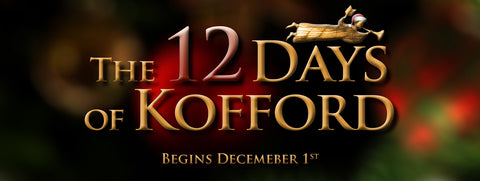
Greg Kofford Books is once again pleased to offer twelve days of discounted holiday shopping from our website!
HERE IS HOW IT WORKS: Every morning from Dec 1th through the 12th, we will be posting a DISCOUNT CODE on our Facebook or Twitter pages. Use this discount code on the corresponding day to receive 30% off select titles. The final day will be an e-book flash sale on Amazon.com.
To help you plan, here are the dates, titles, and sale prices we will be offering beginning Dec 1st. These sales are limited to available inventory. You must follow our Facebook or Twitter pages to get the discount code. Orders over $50 qualify for free shipping. Customers in the Wasatch Front area are welcome to pick orders up directly from our office in Sandy, UT.
Day 1 — Brant Gardner collection
 |
Second Witness, Vol 1: First Nephi $39.95 hardcover |
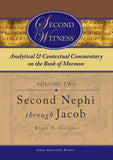 |
Second Witness, Vol 2: Second Nephi through Jacob $39.95 hardcover |
 |
Second Witness, Vol 3: Enos through Mosiah $39.95 hardcover |
 |
Second Witness, Vol 4: Alma $49.95 hardcover |
 |
Second Witness, Vol 5: Helaman through Nephi $39.95 hardcover |
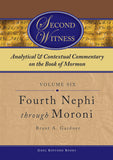 |
Second Witness, Vol 6: Fourth Nephi through Moroni $39.95 hardcover |
 |
The Gift and the Power: Translating the Book of Mormon $34.95 paperback |
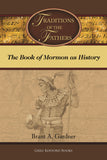 |
Traditions of the Fathers: The Book of Mormon as History $34.95 paperback |
 |
The Garden of Enid: Adventures of a Weird Mormon Girl $22.95 paperback |
 |
The Garden of Enid: Adventures of a Weird Mormon Girl $22.95 paperback |
Day 3 — The Mormon Image in Literature
 |
The Mormoness; Or, The Trials of Mary Maverick: $12.95 paperback |
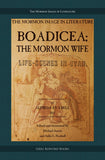 |
Boadicea; the Mormon Wife: Life Scens in Utah $15.95 paperback |
 |
Dime Novel Mormons $22.95 paperback |
 |
Women at Church: Magnifying LDS Women's Local Impact $21.95 paperback |
 |
Mormon Women Have Their Say: Essays from the Claremont Oral History Collection $31.95 paperback |
 |
Voices for Equality: Ordain Women and Resurgent Mormon Feminism $32.95 paperback |
 |
Joseph Smith's Polygamy, Vol 1: History $34.95 paperback |
 |
Joseph Smith's Polygamy, Vol 2: History $34.95 paperback |
 |
Joseph Smith's Polygamy, Vol 3: Theology $25.95 paperback |
 |
Joseph Smith's Polygamy: Toward a Better Understanding $19.95 paperback |
 |
Modern Polygamy and Mormon Fundamentalism: The Generations after the Manifesto $31.95 paperback |
 |
Mormon Polygamous Families: Life in the Principle $24.95 paperback |
 |
Prisoner for Polygamy: The Memoirs and Letters of Rudger Clawson at the Utah Territorial Penitentiary, 1884–87 $29.95 paperback |
 |
Who Are the Children of Lehi? DNA and the Book of Mormon $15.95 paperback |
 |
“Let the Earth Bring Forth”: Evolution and Scripture $15.95 paperback |
 |
Mormonism and Evolution: The Authoritative LDS Statements $15.95 paperback |
 |
Parallels and Convergences: Mormon Thought and Engineering Vision $24.95 paperback |
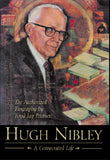 |
Hugh Nibley: A Consecrated Life $32.95 hardcover |
 |
“Swell Suffering”: A Biography of Maurine Whipple $31.95 paperback |
 |
William B. Smith: In the Shadow of a Prophet $39.95 paperback |
 |
LDS Biographical Encyclopedia, 4 Vols $259.95 paperback |
 |
The Man Behind the Discourse: A Biography of King Follett $29.95 paperback |
 |
Liberal Soul: Applying the Gospel of Jesus Christ in Politics $22.95 paperback |
 |
A Different God? Mitt Romney, the Religious Right, and the Mormon Question $24.95 paperback |
 |
Common Ground—Different Opinions: Latter-day Saints and Contemporary Issues $31.95 paperback |
 |
Even Unto Bloodshed: An LDS Perspective on War $29.95 paperback |
 |
War & Peace in Our Time: Mormon Perspectives $29.95 paperback |
 |
The End of the World, Plan B: A Guide for the Future $13.95 paperback |
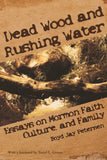 |
Dead Wood and Rushing Water: Essays on Mormon Faith, Culture, and Family $22.95 paperback |
 |
Mr. Mustard Plaster and Other Mormon Essays $20.95 paperback |
 |
Writing Ourselves: Essays on Creativity, Craft, and Mormonism $18.95 paperback |
 |
On the Road with Joseph Smith: An Author's Diary $14.95 paperback |
 |
Hearken O Ye People: The Historical Setting of Joseph Smith's Ohio Revelations $34.95 hardcover |
 |
Fire and Sword: A History of the Latter-day Saints in Northern Missouri, 1836–39 $36.95 hardcover |
 |
A House for the Most High: The Story of the Original Nauvoo Temple $29.95 paperback |
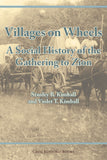 |
Villages on Wheels: A Social History of the Gathering to Zion $24.95 paperback |
 |
Mormonism in Transition: A History of the Latter-day Saints, 1890–1930, 3rd ed. $31.95 paperback |
Day 11 — International Mormonism
 |
Tiki and Temple: The Mormon Mission in New Zealans, 1854–1958 $29.95 paperback |
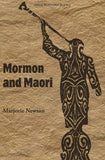 |
Mormon and Maori $24.95 paperback |
 |
The Trek East: Mormonism Meets Japan, 1901–1968 $39.95 paperback |
 |
From Above and Below: The Mormon Embrace of Revolution, 1840–1940 $34.95 paperback |
 |
The History of the Mormons in Argentina $24.95 paperback |
 |
For the Cause of Righteousness: A Global History of Blacks and Mormonism, 1830–2013 $32.95 paperback |
Q&A with Scott Hales for The Garden of Enid, Part 2 February 02 2017
Pre-Order Your Copy Today
What are some of the themes that pop up in part 2?
As I was writing The Garden of Enid, I was interested in unpacking ideas about faith, history, human connection, and truth. Part two is especially interested in truth—one of the slipperiest words in language and Mormonism. For much of the book, Enid is trying to anchor herself to some kind of monolithic notion of truth. She wants to finds something stable in the universe, but she finds that the closer she thinks she gets to monolithic truth, the less monolithic it appears.
I think her journey encourages readers to reflect on the value of truth and how they want it to function in their own lives.
Cameos played a big role in part 1. Who are some of the cameos that we can expect in part 2?
Joseph Smith continues to make cameos in part two, as do Eliza R. Snow, Evan Stephens, and the Book of Abraham mummy. Enid also talks with people like Jane Austen, Karl Maeser, Doctor Philastus Hurlbut, Charles Anthon, George A. Smith, and Juanita Brooks. The lost 116 pages and Joanna Brooks’ Book of Mormon Girl also make appearances.
Some of my favorite cameos in part two involve fictional or mythological figures from pop culture. Enid talks with Matt and Mandy from The Friend magazine, Big Foot, and Charlie Brown.
The most significant cameo in the book, however, is the late Mormon scholar Eugene England, who dresses like the Angel Moroni and acts like Virgil in Dante’s Divine Comedy. Unlike other cameo characters, who always show up in simple four-panel comics, Eugene takes Enid on a five-page odyssey through space and time, belief and doubt.
How does her relationship with her mother develop in part 2?
The relationship becomes much rockier in part two. Enid looks to her mother’s past for answers about her own identity, but she often goes about it the wrong way. She and her mother have a traumatic falling out, and much of the book is about what happens after their relationship hits the fan. In both books, Enid struggles to see her mother as a real person, which causes her to say and do hurtful things to her mother. In part two, things go from bad to worse, but they also get better in unforeseen ways.
What do you think Enid learns about herself in part 2?
At the end of part one, Enid begins to see herself as someone who is capable of having meaningful relationships with other people. In part two, she learns that cultivating such relationships makes her vulnerable to the raw emotions that define human experience. This make her a much more awkward and vulnerable character than the weird Mormon girl we saw in part one, but it also makes her more endearing and relatable. Her heart gets much bigger in part two.
What are some of the challenges you have felt in writing this story?
Writing Enid’s story rarely felt like a challenge. Perhaps my biggest challenge was never letting my natural reserve get in the way of her audacity. Enid and I share many of the same interests, but we have different temperaments. Maybe that’s why I found her story so easy to write.
Of course, many of the comics touch on controversies within Mormonism, and addressing them with sensitivity was sometimes a challenge. Some satirists like to aggravate wounds, but my satire is meant to sting like antiseptic.
What do you hope readers will take away from Enid’s life?
I hope people will read Enid and decide to stop being sucky to each other. In other words, I hope Enid’s life brings about world peace and better music on the radio.
I also hope people will read Enid and be inspired to tell stories of their own. Mormonism is an inexhaustible landscape for creative people. I hope better writers and artists than me will read Enid and want to draw on their own experiences with Mormonism to tell stories that enrich our understanding of and appreciation for the Mormon landscape.
Will there be a part 3? There has to be a part 3. I mean, there really, really has to be a part 3.
Part three is always a possibility. I have an idea for a comic about Enid’s last summer before she goes to college. The Garden of Enid has always unfolded in real time, however, and I don’t know if I have the time this summer to do that with this story. I’ll probably start drawing it anyway to see where it goes. If I end up showing Enid as a freshman in college, so be it. I’m sure it will be awkward.
But I don’t plan to start a part three until I finish my current serial comic, Chronicles of Wyler, which is a kind of spin-off prequel to The Garden of Enid. Readers of The Garden of Enid: Adventures of a Weird Girl, Part One know Wyler from Enid’s EFY experience. Chronicles of Wyler tells the story, more or less, of how Wyler got to EFY. I’m almost finished with it, but one Wyler comic takes about three times longer to draw than an Enid comic—and I have much less time to devote to it than I had when I was drawing Enid comics all the time.
Chronicles of Wyler is a different reading experience than The Garden of Enid, and has a much smaller fan base, but I think readers who like Enid will like Wyler’s story as well.
Pre-Order Your Copy Today
On the twelfth day of Kofford: $1.99 flash sale on Kindle e-books! December 12 2016

On the twelfth day of Kofford, fill your digital stockings with our HUGE e-book promotion. Today only, each of the following titles are only $1.99 on Kindle! PLUS, to help you prepare for the upcoming D&C year in Gospel Doctrine class, we are offering B. H. Robert's classic six-volume A Comprehensive History of the Church on Kindle for only $3.99!
This flash sale ends at midnight tonight (Dec. 12th)
On the tenth day of Kofford: 30% off war and peace titles! December 10 2016

War and peace titles are 30% off December 10th. These special prices are only available for one day, so don't wait!
Orders over $50 qualify for free shipping. Also, local Utah customers can opt to pick up their order directly from our office in Sandy (select this option under the shipping menu).
For more information about the Twelve Days of Kofford holiday sales, click here.
 |
War & Peace in Our Time: Mormon Perspectives Retail: $29.95 |
 |
Even unto Bloodshed: An LDS Perspective on War Retail: $29.95 |
 |
The End of the World, Plan B: A Guide for the Future Retail: $13.95 |
 |
Saints of Valor: Mormon Medal of Honor Recipients, Updated 2nd Edition Retail: $31.95 |
On the eighth day of Kofford: 30% contemporary issues titles! December 08 2016

All contemporary issues titles are 30% off December 8th. These special prices are only available for one day, so don't wait!
Orders over $50 qualify for free shipping. Also, local Utah customers can opt to pick up their order directly from our office in Sandy (select this option under the shipping menu).
For more information about the Twelve Days of Kofford holiday sales, click here.
 |
Women at Church: Magnifying LDS Women's Local Impact Retail: $21.95 |
 |
Common Ground—Different Opinions: Latter-day Saints and Contemporary Issues Retail: $31.95 |
 |
The Liberal Soul: Applying the Gospel of Jesus Christ in Politics Retail: $22.95 |
 |
Voices for Equality: Ordain Women and Resurgent Mormon Feminism Retail: $32.95 |
On the sixth day of Kofford: 30% off international Mormon studies titles! December 06 2016
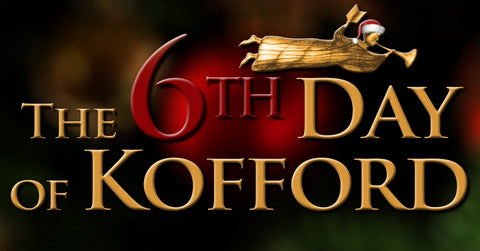
All international Mormon studies titles are 30% off December 6th. These special prices are only available for one day, so don't wait!
Orders over $50 qualify for free shipping. Also, local Utah customers can opt to pick up their order directly from our office in Sandy (select this option under the shipping menu).
For more information about the Twelve Days of Kofford holiday sales, click here.
 |
The Trek East: Mormonism Meets Japan, 1901–1968 Retail: $39.95 |
 |
Mormon and Maori Retail: $24.95 Best International Book Award, Mormon History Association |
 |
Tiki and Temple: The Mormon Mission in New Zealand, 1854–1958 Retail: $29.95 Best International Book Award, Mormon History Association |
 |
For the Cause of Righteousness: A Global History of Blacks and Mormonism, 1830–2013 Retail: $32.95 Best Book Award, Mormon History Association |
 |
The History of the Mormons in Argentina Retail: $24.95 |
 |
From Above and Below: The Mormon Embrace of Revolution, 1840 – 1940 Retail: $34.95 Best International Book Award, Mormon History Association |
On the third day of Kofford: 30% off personal essay titles! December 03 2016

All personal essay titles are 30% off on December 3rd. These special prices are only available for one day, so don't wait!
Orders over $50 qualify for free shipping. Also, local Utah customers can opt to pick up their order directly from our office in Sandy (select this option under the shipping menu).
For more information about the Twelve Days of Kofford holiday sales, click here.
 |
Dead Wood and Rushing Water: Essays on Mormon Faith, Culture, and Family Retail: $22.95 |
 |
Mr. Mustard Plaster and Other Mormon Essays Retail: $20.95 |
 |
Writing Ourselves: Essays on Creativity, Craft, and Mormonism Retail: $18.95 |
Twelve Days of Kofford Christmas Sale 2016 November 30 2016

MERRY CHRISTMAS FROM GREG KOFFORD BOOKS
Greg Kofford Books is pleased to announce our annual holiday sale on select popular titles beginning December 1st – December 12th.
Here's how it works: at the stroke of midnight each day, a new blog post will go live on our website listing that day's special offerings along with a discount code that you can enter at check-out to get the holiday price. It's that simple. We will also be posting the daily offering and discount code on our Facebook page at 7am.
*Orders over $50 qualify for free shipping (continental U.S. customers only). Local Utah customers can stop by our office in Sandy to pick up their orders as well. Holiday inventory on some titles may be limited, so be sure to take advantage of the daily sale early.*
To help you plan in advance, here are our scheduled sales:
Day 1 — Brant Gardner titles
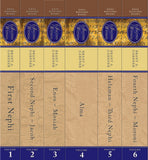 |
Second Witness: Analytical & Contextual Commentary on the Book of Mormon series
|
 |
The Gift and Power: Translating the Book of Mormon |
 |
Traditions of the Fathers: The Book of Mormon as History Best Religious Non-fiction Award, Association for Mormon Letters |
Day 2 — Adam Miller titles (essays in Mormon theology)
 |
Rube Goldberg Machines: Essays in Mormon Theology Retail $18.95 |
 |
Future Mormon: Essays in Mormon Theology Retail: $18.95 |
Day 3 — Personal Essays
 |
Dead Wood and Rushing Water: Essays on Mormon Faith, Culture, and Family Retail: $22.95 |
 |
Mr. Mustard Plaster and Other Mormon Essays by Mary Lithgoe Bradford Retail: $20.95 Sale price: $14.67 |
 |
Writing Ourselves: Essays on Creativity, Craft, and Mormonism Retail: $18.95 |
Day 4 — Blake T. Ostler titles
 |
Exploring Mormon Thought series by Blake T. Ostler 30% off each title |
 |
Fire on the Horizon: A Meditation on the Endowment and Love of Atonement Retail: $17.95 |
Day 5 — Contemporary Studies in Scripture
 |
Authoring the Old Testament: Genesis — Deuteronomy Retail: $26.95 |
 |
Re-reading Job: Understanding the Ancient World's Greatest Poem Retail: $20.95 |
 |
Search, Ponder, and Pray: A Guide to the Gospels Retail: $27.95 |
 |
Beholding the Tree of Life: A Rabbinic Approach to the Book of Mormon Retail: $21.95 |
 |
The Vision of All: Twenty-five Lectures on Isaiah in Nephi's Record Retail: $25.95 |
Day 6 — International Mormonism
 |
The Trek East: Mormonism Meets Japan, 1901–1968 Retail: $39.95 |
 |
Mormon and Maori Retail: $24.95 Best International Book Award, Mormon History Association |
 |
Tiki and Temple: The Mormon Mission in New Zealand, 1854–1958 Retail: $29.95 Best International Book Award, Mormon History Association |
 |
For the Cause of Righteousness: A Global History of Blacks and Mormonism, 1830–2013 Retail: $32.95 Best Book Award, Mormon History Association |
 |
The History of the Mormons in Argentina Retail: $24.95 |
 |
From Above and Below: The Mormon Embrace of Revolution, 1840 – 1940 Retail: $34.95 Best International Book Award, Mormon History Association |
Day 7 — Polygamy titles
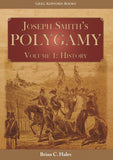 |
Joseph Smith's Polygamy: History and Theology Now in paperback! 30% off each title |
 |
Joseph Smith's Polygamy: Toward a Better Understanding Retail: $19.95 |
 |
Modern Polygamy and Mormon Fundamentalism: The Generations after the Manifesto Retail: $31.95 Best Book Award, John Whitmer Historical Association |
 |
Mormon Polygamous Families: Life in the Principle Retail: $24.95 |
 |
Prisoner for Polygamy: The Memoirs and Letters of Rudger Clawson at the Utah Territorial Penitentiary, 1884–87 Retail: $29.95 |
Day 8 — Contemporary Issues
 |
Women at Church: Magnifying LDS Women's Local Impact Retail: $21.95 |
 |
Common Ground—Different Opinions: Latter-day Saints and Contemporary Issues Retail: $31.95 |
 |
The Liberal Soul: Applying the Gospel of Jesus Christ in Politics Retail: $22.95 |
 |
Voices for Equality: Ordain Women and Resurgent Mormon Feminism Retail: $32.95 |
Day 9 — Biography
 |
Hugh Nibley: A Consecrated Life Retail: $32.95 Best Biography Award, Mormon History Association |
 |
“Swell Suffering”: A Biography of Maurine Whipple Retail: $31.95 Best Biography Award, Mormon History Association |
 |
William B. Smith: In the Shadow of a Prophet Retail: $39.95 Best Biography Award, John Whitmer Historical Association |
 |
The Man Behind the Discourse: A Biography of King Follett Retail: $29.95 |
Day 10 — War and Peace
 |
War & Peace in Our Time: Mormon Perspectives Retail: $29.95 |
 |
Even unto Bloodshed: An LDS Perspective on War Retail: $29.95 |
 |
The End of the World, Plan B: A Guide for the Future Retail: $13.95 |
 |
Saints of Valor: Mormon Medal of Honor Recipients, Updated 2nd Edition Retail: $31.95 |
Day 11 — Mormon Image in Literature
 |
The Mormoness; Or, The Trials Of Mary Maverick: A Narrative Of Real Events Retail: $12.95 |
 |
Boadicea; the Mormon Wife: Life Scenes in Utah Retail: $15.95 |
Day 12 — Ebook Flash Sale — $1.99 for select titles
To be announced. Stay tuned!
Q&A with Jack Harrell, author of Writing Ourselves: Essays on Creativity, Craft, and Mormonism May 30 2016
Pre-order your copy today.
Can you name a few writers who have had the greatest influence on you? What draws you to their work?
My favorite writer is Flannery O’Connor. Her fiction is fantastic, and her essays and letters on writing are full of insight and humor. Back in 1994, at Illinois State University, I did my master’s thesis on her novel Wise Blood. Her work speaks to a lot of Mormons because she’s unapologetic about her Catholic faith. Though her writings are obviously religious, she doesn’t slip into oversimplification or didacticism. And plenty of readers who aren’t religious find satisfaction and meaning in her work. Her writing works on a number of levels. I also appreciate writers like Wallace Stegner, Raymond Carver, and Willa Cather.
Among Mormon writers, Levi Peterson is very important, I think—a must-read. And I think any Mormon interested in good writing should read Virginia Sorensen’s 1963 story collection Where Nothing is Long Ago: Memories of a Mormon Childhood.
I’m drawn to small-town characters and settings in the contemporary West and the Midwest, probably because that’s the world I know best. That’s what I’m interested in writing about, too—telling the stories of ordinary folks in these small towns.
Lately I’ve been reading contemporary philosophers amenable to a religious viewpoint. John Polkinghorne is one I like. He’s an Anglican priest and theologian with two PhDs in physics. I’ve also learned a great deal from the writings of Roger Scruton, especially from his books The Face of God, The Soul of the World, and Beauty.
The last book I read was a Greg Kofford publication: Future Mormon, by Adam S. Miller. It’s great to see a tradition of thoughtful scholarship continue among Latter-day Saints like Miller.
Some label the religious seeker as being on a quest for an epiphany. Can you discuss how epiphany in a spiritual sense is related to epiphany in a creative sense?
Long before James Joyce made it a literary term, the word “epiphany” was a religious term referring to some profound insight from the divine. I believe most religious people, no matter what their faith, seek communion with the divine, or just a connection with something beyond themselves. I think very few people would see the human race as the greatest force or power in the universe; and even if they do, they’d still admit those times when we reach for something greater within us. Isn’t this the quest of most art? To reach for something higher?
Of course, there are a few who would say, “There’s nothing great within us, nothing great beyond us. Therefore, art should express that. Art should be against epiphanies, against transcendence. Art should be being emphatically ugly because ugliness and entropy is all we have.” But that’s a pretty rare position to take, and pretty cynical too.
It seems to me that the very act of creation is rooted in a desire to make something outside of ourselves that expresses what we see or feel within. Maybe every artist is just trying to meet himself or herself, trying to understand and recognize what’s there.
In the sixth chapter, you discuss teaching students to write. You mention the Mormon “struggle to tell the truth.” Why do Mormons struggle with superficiality in their writing?
It’s not just a Mormon struggle. It’s human nature to fall back on easy answers and struggle to tell the truth. We’re all guilty of horizontal thinking: worrying about what the person next door thinks rather than doing what we know to be true. Honesty with ourselves is a normal human struggle too. We all create fictions to justify the way we live and the way we see the world. Some of the lies we tell emerge from our good intentions. We just don’t want to hurt someone’s feelings.
It’s the same with Mormons. We don’t want to hurt people, we’re worried about what our neighbors think, and we want to keep things pleasant. But life isn’t always pleasant. Conflict is at the heart of meaningful stories. If we avoid conflict, we hamstring good stories. The scriptures are full of conflicts. Church history isn’t the simple story that some once thought it to be. There are all kinds of complex layers at work in the scriptures and in Church history and in all our lives.
I think, more and more, we’re going to see that easy answers don’t cut it. We need to face complexities, not avoid them. As the teachings of the Church grow more at odds with secular society, we’re going to have to embrace the complexities of our own position in order to survive. This involves telling the truth.
One of the central messages of Mormonism is that at the potential for redemption is at the center of our existence. The need for redemption assumes that some kind of fall or loss came first. That’s a level of complexity right there—much more than simply saying “the universe is essentially good.” Fall and redemption transcend superficiality every time.
Can you give your take on what makes literature virtuous or praiseworthy?
Yes, I talk about this in an essay on the 13th Article of Faith and how it can be a standard for judging literature.
The root of the word “virtue,” means “manliness,” or, as we’d put it today, “strength.” Implied in that word are concepts like “integrity,” “vigor,” and “power.” In Mormon culture the word “virtue” has become nearly synonymous with “chastity.” Chastity is one aspect of virtue, but the meaning of that word is much broader. I’d say a virtuous book is one that’s powerful, meaningful, and truthful.
“Praiseworthy,” simply means worthy of praise. In that sense, literature that gets good reviews from those who really know what they’re talking about can be called praiseworthy. A reader has to think critically about the praise that comes from someone who simply wants to boost sales, regardless of the quality of the work. The 13th Article of Faith provides a great standard for measuring all these things.
You state that Mormon fiction tends to be “essentially positive in its outlook,” can you summarize why and how that might be a stumbling block towards greater authenticity?
Philosophically, I don’t think an essentially positive outlook is a stumbling block to authenticity. I’d say the same is true in a Mormon theological context as well. In the Mormon view of existence, there is always the potential for a positive outlook, and a positive outcome, because of the atonement. The catch comes when moral agency is introduced. Every child of God can potentially be saved and exalted, but not everyone will, because of agency, because of the way we each can use or misuse our agency.
Maybe it’s this business of agency that introduces a stumbling block to authenticity. When a writer forces a tidy resolution on a character or story, that’s a violation of the “agency,” if you will, of the characters in the story. Another stumbling block arises when a writer approaches the subject matter with a kind of oversimplified “all is well” outlook.
I think the Mormon writer who really understands the depths of Mormonism itself will take a more complex view on writing and of the world. That’s one of the recurring arguments I make in the book, that if we really understand a live our faith, we’ll solve a lot of the problems that lead to bad art.
Mormon writers seem to do well in science fiction and fantasy genres, but struggle in general fiction. Why do you think that is; and in what ways can Mormonism can add a unique voice to general fiction?
I think one factor has to do with language and content. Often a person can write (or read) a science fiction or fantasy novel without dealing with the challenges of vulgar language and sexual scenes. Certainly this isn’t true of all sci-fi/fantasy. But it’s easier to choose authors who don’t go there.
In the mainstream literary genre, sex and language have become pretty common. There’s a reason for this. In the twentieth century, literary fiction grew more transparent about representing the daily lives of ordinary people. People have sex, people swear, and contemporary fictions doesn’t shy away from that. I’m not saying this is a good thing. It’s just the way it is.
I do think that contemporary culture is more vulgar, more irreverent, less sensitive. The Greek root of the word “aesthetic” means “sensitive.” Contrast that word with the word “anesthetic,” which means “the loss of feeling.” Contemporary culture may want to boast that everything is “out there,” that nothing is taboo. And certainly there’s virtue in openness. But we have to be careful. People who go too far into irreverence and subversion might find that they lose something in the bargain.
The language and content factor may not be the reason Mormon writers shy away from general, literary fiction. That’s just a supposition on my part because I really don’t know the answer. I just know that I care more about the problems of a school bus driver living in Rigby, Idaho, than I care about the war between the Ledmendons and the Allickakakials on Zarnack 5.*
Honestly, I think general, literary fiction invites a more thoughtful and measured tone. No one listens to NPR because they want caustic, sensational commentary. Recently l read a great literary novel by Marilynne Robinson, a novel about a Midwestern pastor’s last words to his young son, whom he fathered late in life. The novel is very real about the lives it depicts, but there’s nothing there that would scandalize your grandmother. I’d love to see more novels by Mormons about real Mormons with the meaningful problems that I see every day in my own life and in the lives of those around me. The stories are there, waiting to be told.
And this may not be about writers at all. It may be a reflection of the readers. Could it be that Mormon writers gravitate toward speculative fiction primarily because that’s what sells?
It’s hard to fault writers who want to sell books and are willing to do what it takes to make that happen.
* Editorial note: Greg Kofford Books wishes to apologize to any residents of Zarnack 5 who may find offense in the author's disregard for the ongoing struggles between the Ledmendons and Allickakakials.
Year in Review and the Year Ahead December 29 2015
2015 was another amazing year for Greg Kofford Books! Here is a recap of the year and a look ahead to what is coming in 2016 and beyond.
Award-winning Publications
Several Kofford titles won awards from the Mormon History Association and the Association for Mormon Letters in 2015:
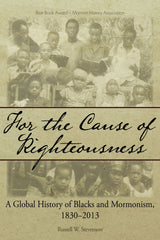 |
MHA Best Book Award For the Cause of Righteousness: A Global History of Blacks and Mormonism, 1830-2013 “Invaluable as a historical resource.” — Terryl L. Givens, author of Parley P. |
 |
MHA Best International Book Award Mormon and Maori “Unflinchingly honest yet unfailingly compassionate.” — Grant Underwood, |
 |
AML Religious Non-Fiction Award Re-reading Job: Understanding the Ancient World's Greatest Poem “A new gold standard for Mormon writings.” — Julie M. Smith, author, Search, |
All 2015 Titles
Here are all of the great titles that Greg Kofford Books published this past year:
 |
Mr. Mustard Plaster and Other Mormon Essays “Vibrant portraits of a kind and loving soul.” — Boyd J. Peterson, author of |
 |
Perspectives on Mormon Theology: Scriptural Theology Each essay takes up the relatively un-self-conscious work of reading a |
 |
Joseph Smith's Polygamy: Toward a Better Understanding “It is a book that will be read and discussed for years to come.” — Robert L. |
 |
Even Unto Bloodshed: An LDS Perspective on War “Indispensable for all future Mormon discussions of the subject.” — Daniel C. |
 |
William B. Smith: In the Shadow of a Prophet “Walker’s biography will become essential reading.” — Mark Staker, author of |
 |
Voices for Equality: Ordain Women and Resurgent Mormon Feminism “Timely, incisive, important.” — Joanna Brooks, co-editor of Mormon |
 |
Traditions of the Fathers: The Book of Mormon as History “Illuminating, prismatic views of the Book of Mormon.” — Mark Alan Wright, |
Looking Ahead at 2016 and Beyond
Here are a few eagerly-anticipated titles currently scheduled for the first part of 2016 and a look at what is in the works for the future:
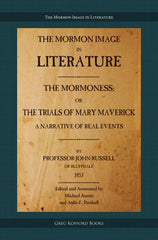 |
The Mormon Image in Literature Series The Mormoness; Or, The Trials Of Mary Maverick: A Narrative Of Real Events Published in 1853, the first American novel about the Mormons is also one of |
 |
The End of the World, Plan B: A Guide for the Future Environmental decline, political gridlock, war and rumors of war, decadence, |
Also forthcoming...
More volumes are in the works for our The Mormon Image in Literature, Contemporary Studies in Scripture, and Perspectives on Mormon Theology series.
Saints, Slaves, and Blacks by Newell G. Bringhurst, revised and updated
Lot Smith: Utah Hero, Arizona Colonizer by Carmen Smith and Talana Hooper
The Trek East: Mormonism Meets Japan, 1901-1968 by Shinji Takagi
Science the Key to Theology by Steven L. Peck
And much, much more...
Thank you for making 2015 exceptional and we are excited about 2016!
20% Off Sale on Women's Issues Books October 27 2015

With the recently published essays approved by the LDS Church on the topics of women and priesthood and the doctrine of Heavenly Mother, now would be a great time to read up on the conversations surrounding women in Mormonism.
Greg Kofford Books is pleased to offer 20% off the following titles beginning today through November 3rd when you type "ESSAYS" in the discount code box at checkout.
Mormon Women Have Their Say
Edited by Claudia L. Bushman and Caroline Kline
Sale Price: $25.56 + tax, paperback
(enter the word "ESSAYS" in the discount box at checkout)
From Claudia Bushman: Throughout the tangled past of the Church of Jesus Christ of Latter-day Saints, women have been active and vocal participants. Their journals and diaries, primarily from the nineteenth century, have been plumbed for evidence of their experience and attitudes. Less is known and written about contemporary Mormon women. LDS women today still live in a patriarchal society. What is it like for them? How to they respond to the Church they have joined or inherited? Can they make space for their interests? How do they envision their contemporary role in the Church? What are the issues that define their lives? Writing our own stories empower us. Many of these narrators do not normally speak out. This project preserves and perpetuates their voices and memories. The silent majority goes on record.
In light of the Gospel Topic essay "Mother in Heaven," readers would find the chapter, "Heavenly Mother," interesting as it explores the views and feelings of contemporary LDS women on this important theological topic.
Praise for Mormon Women Have Their Say:
“Mormon women have always had a lot to say, but generation after generation, their voices fade away. The problem is not just that archives and manuals favor the writings of male leaders. The real problem is that few of us know how to listen to seemingly common stories. We revere our sisters but don’t understand them. The essays in this volume go beyond collecting and preserving to the hard work of interpretation.” — Laurel Thatcher Ulrich, author of Well-Behaved Women Seldom Make History
Women at Church: Magnifying LDS Women's Local Impact
By Neylan McBaine
Sale Price: $17.56 + tax, paperback
(enter the word "ESSAYS" in the discount box at checkout)
From Neylan McBaine: This book is predicated on a single belief: that there is much more we can do to see, hear, and include women at church. In an effort to increase awareness of that belief and move all Church members to act on it, I have written this book as an inducement toward greater empathy for those who feel unseen, unheard, and unused, and a strategic guide to improving our gender cooperation in local Church governance. This book is for men and women who either are themselves engaged in this wrestle or know someone who is. It is for women who have been sitting on the sidelines of the media conversation around Mormon women, not sure where they fit or what they feel, but they resonate with at least some of what has been said. It is for the women who can't understand why someone would be discontent in the light of our glorious doctrine, but whose daughter or sister or friend or Relief Society sister may not be feeling so at ease.
Praise for Women at Church:
“A pivotal work replete with wisdom and insight. Neylan McBaine deftly outlines a workable programme for facilitating movement in the direction of the ‘privileges and powers’ promised the nascent Female Relief Society of Nauvoo.” — Fiona Givens, co-author of The God Who Weeps: How Mormonism Makes Sense of Life
Voices for Equality: Ordain Women and Resurgent Mormon Feminism
Edited by Gordon Shepherd, Lavina Fielding Anderson, and Gary Shepherd
Sale Price: $26.36 + tax, paperback
(enter the word "ESSAYS" in the discount box at checkout)
From Lavina Fielding Anderson: In larger Mormon society, I consider this book to be a third voice in an intensifying conversation. The first voice was that of Sheri Dew, president and CEO of Deseret Book, spelling out her position in Women and the Priesthood. The second voice followed a year later with the appearance of Neylan McBaine's Women at Church: Magnifying Women's Local Impact. This book, Voices for Equality: Ordain Women and Resurgent Mormon Feminism, is the third book in as many years to explore this disquieting, yet immensely significant topic. Broader in scope than either Dew or McBaine's works, it is data driven, using a combination of sociological and historical analysis, political and theological explorations, and sometimes wrenching personal experiences.
Praise for Voices for Equality:
"In these pages, some of Mormonism's finest researchers and thinkers bring a richness of historical and scholarly perspective and a powerful new survey of tens of thousands of Mormon people to bear on headline-making issues like women's ordination, sister missionaries, church discipline, the internet and faith, and change in the LDS church. This book is a much needed mirror for our time.” — Joanna Brooks, co-editor of Mormon Feminism: Essential Writings and author of The Book of Mormon Girl: A Memoir of an American Faith
SALE ENDS 11-3-15
Greg Kofford Books Award-Winning Titles June 12 2015
Since its first publication in 2001, Greg Kofford Books has established a reputation as a publisher of consistently award-winning titles in Mormon history and literature. Check out this comprehensive list of each of our books that has received an award:

2015 Best Book Award, Mormon History Association:For the Cause of Righteousness: A Global History of Blacks and Mormonism, 1830-2013, by Russell Stevenson. 
2015 Best International Book Award, Mormon History Association: Mormon and Maori, by Marjorie Newton.
2014 Best Religious Non-fiction Award, Association for Mormon Letters: Re-reading Job: Understanding the Ancient World's Greatest Poem, by Michael Austin. 
2014 Best International Book Award, Mormon History Association: From Above and Below: The Mormon Embrace of Revolution, 1840-1940, by Craig Livingston.
2013 Best International Book Award, Mormon History Association: Tiki and Temple: The Mormon Mission in New Zealand, 1854-1958, by Marjorie Newton. 
2012 Best Biography Award, Mormon History Association: Swell Suffering: A Biography of Maureen Whipple, by Veda Tebbs Hale.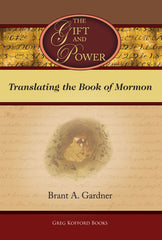
2011 Best Criticism Award, Association for Mormon Letters: The Gift and Power: Translating the Book of Mormon, by Brant Gardner. 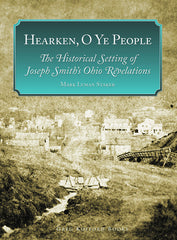
2011 Best Book Awards, Mormon History Association and John Whitmer Historical Association: Hearken O Ye People: The Historical Setting of Joseph Smith's Ohio Revelations, by Mark Staker. 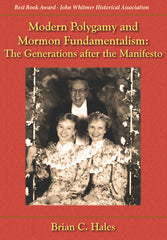
2007 Best Book Award, John Whitmer Historical Association: Modern Polygamy and Mormon Fundamentalism: The Generations after the Manifesto, by Brian Hales. 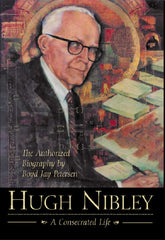
2003 Best Biography Award, Mormon History Association: Hugh Nibley: A Consecrated Life, by Boyd Petersen.
Kofford Authors at MHA June 01 2015
Greg Kofford Books authors have long been well-represented as speakers and panel chairs at annual conferences of the Mormon History Association, and the 2015 Conference at the Utah Valley Convention Center in Provo, Utah, June 4-7, is no exception! Check out the titles of their presentations and panels below:
Russell Stevenson, author of For the Cause of Righteousness: A Global History of Blacks and Mormonism, 1830-2013 will present, "We Aren't Africa: Mormonism in Nigeria, 1960-1964."
Joseph Spencer, author of For Zion: A Mormon Theology of Hope will present, "Canon and History: On the Revelation to Emma Smith."
Boyd Petersen, author of Hugh Nibley: A Consecrated Life and Dead Wood and Rushing Water: Essays on Mormon Faith, Culture, and Family will chair theTheology and History panel.
Claudia Bushman, co-editor (with Caroline Kline) ofMormon Women Have Their Say: Essays from the Claremont Oral History Collection will present "Early Decisions," as part of the Exponent II: Present at the Creation panel.
Lavina Fielding Anderson and Newell Bringhurst, editors of Excavating Mormon Pasts: The New Historiography of the Last Half Century will chair a panel and present a paper, respectively. Lavina will chair the Mormon History Journals Editors panel, and Newell will present "President David O. McKay's 1954 Encounter with the LDS Church's Black Priesthood Ban: An Important but Forgotten Episode."
Thomas Alexander, author of Mormonism in Transition: A History of the Latter-day Saints, 1890-1930, 3rd ed. will speak as part of the Culture of the Early Mormon History Association roundtable.
Todd Compton, author (with Leland H. Gentry) ofFire and Sword: A History of the Latter-Days Saints in Northern Missouri, 1836-39 will present "Ganado Mucho, Navajo Headman, and the Mormons."
Don Bradley, author of the forthcoming The Lost 116 Pages: Rediscovering the Book of Lehi will present, "From Cumorah's 'Ark' to Joseph's Hat: Sacred and Mundane Objects in the Emergence of the Book of Mormon."
Christine and Christopher Blythe, editors of the forthcoming Mormonisms: A Documentary History, 1844-1860 will chair panels and present papers. Christine will present, " 'Presiding at Birth:' The Creation of Folk Theologies among Latter-day Saint Women," and she will chair the Mormonism and Material Culture panel. Christopher will present, "Martyrdom Canes and Vernacular Mormonism" in that same panel.
Stuart Parker, author of the forthcoming History through Seer Stones: A Hundred Years of Mormon Pasts will present, "Margarita Bautista's 'Eternal Mexico:' A Revolutionary Mormon proto-Chicanismo."
Q&A with Joseph Smith's Polygamy authors Laura Hales and Brian Hales April 06 2015

Joseph Smith's Polygamy: Toward a Better Understanding
by Brian C. Hales and Laura H. Hales
223 pages
Paperback $19.95 (ISBN 978-1-58958-723-6)
Available April 14th in print and e-book
Q: The last few years we've been inundated with new information concerning Mormon polygamy, from podcasts about polygamy, to the Church posting an essay on the subject, to Brian's 3 volume set on the history and theology of polygamy in early Mormonism. How does Joseph Smith's Polygamy: Toward a Better Understanding fit into that landscape and contribute to this ongoing conversation?
Laura: The Gospel Topics essay on early polygamy gave as good of a basic introduction to the subject as it could in ten pages. Brian’s book was 1500 pages. This book expands on the information in the essay by using the research used to write the trilogy. The first third of the book provides a theological framework for the unfolding of Nauvoo plural marriage; the second third provides the history; and the third contains short biographies of 35 of Joseph’s possible plural wives who agreed to participate in this strange practice.
Brian: Even though this volume is short, no major topic has been avoided. All the controversies have been presented. This volume fills an important niche to help inquirers who want more information than that found in the LDS.org essay, but don’t have the time or interest to dive into 1500+ pages of my trilogy, which deals more with the various opinions regarding the controversies.
Q: Like most authors, you would probably like as many people as possible to read your book. Is there an intended audience for this volume?
Laura: Absolutely. This book differs from the first three volumes in the series in that it was written specifically for Latter-day Saint members curious about Joseph Smith and his many plural wives, or who wonder about the meaning of Doctrine and Covenants 132. Whether the reader has a basic or a more comprehensive knowledge of the topic, they will benefit from the information in this volume.
Q: What do you hope they get from it?
Laura: Our hope is that readers will gain some reassurance. Often in the past, aspects of the practice have been exploited or sensationalized by authors less concerned about accuracy than promoting their opinion of Joseph Smith or for their distaste for the practice of plural marriage.
There may be things that are surprising and possibly discomforting about what occurred during the time period, but when contextualized, they are easier to understand. The early polygamists were just as skeptical as us about the restoration of the practice. Their actions (including the behaviors of Joseph and Emma) are better understood when historical and theological information is provided.
We would also hope that readers will gain just a little bit of sympathy for Joseph Smith as they learn of the difficult choices he had to make. Perhaps readers will also feel admiration for the plural wives whose faith, courage, and tenacity enabled them to have the bravery to embrace this commandment.
Q: Books about controversial subjects invite all kinds of commentary and criticism. As you have thought about what you would like reviewers to write about the book, what would top your wish list?
Laura: We did our best to present the story in the words of the participants without overly opining on motivations for behaviors, leaving the reader to ponder the evidence. At times, we probably could have provided more context, but we really wanted the reader to be able to look at the scant evidence and realize that much that has been previously published has included a fair amount of guess work. There is so much that we simply do not know. Hopefully we have conveyed the nebulous nature of the historical record, so the reader will be wary of any author that proclaims to know for surety what happened in any given situation.
If readers and reviewers could leave the book with an open mind, pondering what they have read, and searching on their own to answer their questions through further research, then I would be pleased. I have done this myself, studying the history of these people, how they interacted socially, and why Joseph would choose to be sealed to certain women. Some of my questions have been answered, but it takes time, patience, and study on the part of the seeker. Having reviewers laud us for leaving the door open instead of evaluating the merits of the book on their preconceived notions of what occurred, would be great.
Brian: Because polygamy involves sex and religion, it is immensely controversial. It appears that the greatest factor in determining a person’s reaction to plural marriage (or a book about it) involves their a priori beliefs. Because of the ambiguities and contradictions in the historical record, multiple interpretations can be advanced. Unbelievers seem to disagree with any explanation that does not depict Joseph as an adulterer motivated by libido. Believers, on the other hand, may join with us in seeing that while questions exist, there is no credible evidence Joseph was involved in sexual immorality and much documentation to support he was sincere and felt compelled by God to establish the practice.
This book is not an attempt to increase testimony, but instead to tell the story as accurately as we can, believing that historical truth will support belief better than any alternative. Accordingly, the best we may be able to hope for is for reviewers to conclude that we have presented the evidences with clarity and in a balanced way allowing individuals to understand our interpretations, even if they do not agree with them.
Q: Laura, tell us a little about your own journey in co-authoring this volume with Brian. Where were you at personally about the subject matter when you began the project, and where did you end up?
Laura: My journey began before I married Brian. I attended an author-meets-critic session at the Sunstone Symposium where Brian’s trilogy was being critiqued. I hadn’t read the book, so I had no idea if the criticisms were valid. So I read the books over the next six weeks, expecting not to learn much new about early polygamy. After I finished the last page of the book, I found myself asking what had happened to the Joseph Smith I knew.
After thinking, writing, and studying about Joseph Smith and his practice of polygamy for the last eighteen months, I think I have found him again. He isn’t the sanitized prophet that I grew up with, but he is much more real to me. Over time I have been able to feel sympathy for him, which was elusive for me for a long time. The Joseph I know now is so much more multi-dimensional, and I feel like I have been able to get a small glimpse into his character from those who knew him. Hopefully over the years that view will broaden with even more study because I still have unanswered questions.
Q: What were the most enjoyable and least enjoyable aspects of writing Joseph Smith's Polygamy?
Laura: The most enjoyable part of writing a book with a co-author is the synergy that happens—working together on an idea, completing each other’s sentences, and suggesting that elusive word to express a common thought. The least enjoyable aspect of writing this book were the spirited conversations that occurred when we disagreed on how to present a specific concept. I had to keep reminding Brian that he had already written “that book” and this one was for a different purpose and audience. I’m sure this was frustrating for him as well because this it is the first time he has collaborated on a writing project.
Pre-order your copy here.
Boyd Jay Petersen, Inaugural Speaker at 2014 John A. Widtsoe Lecture Series January 09 2014
His lecture, “Mormonism's All Seeing I: The Personal Essay and the Search for Truth,” invokes the legacy of Mormonism's great essayist Eugene England, exploring not just the balance between faith and the critical demands of rigorous scholarship but on the kinds of selves we uncover and create through self-narration and the cultivation of narrative voice. Boyd's writing takes up the legacy of Gene England's project—in its vulnerability and honesty, its generosity and warmth, and in its internal tensions.
The lecture is free and open to the public, and light refreshments will be available.







